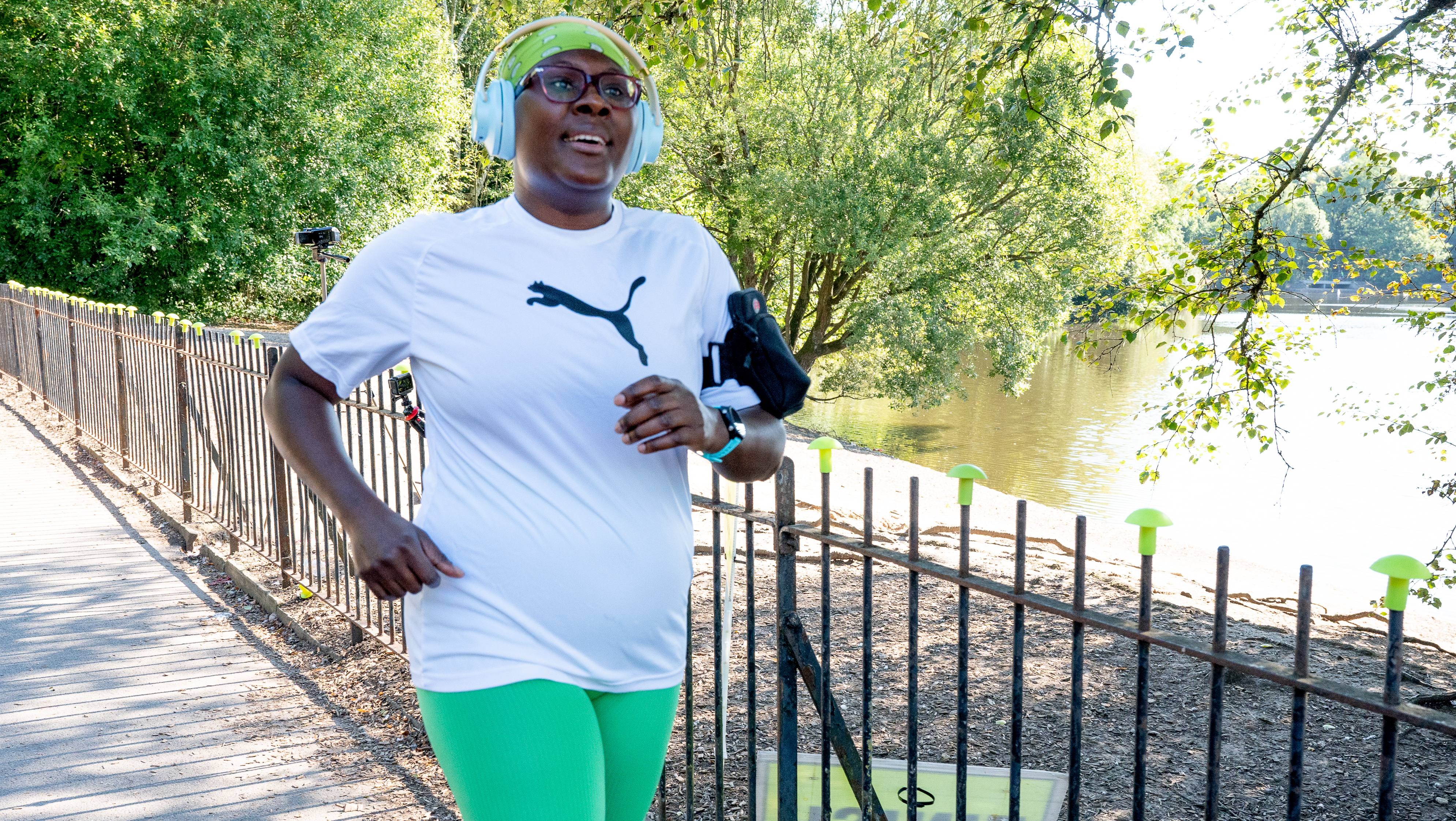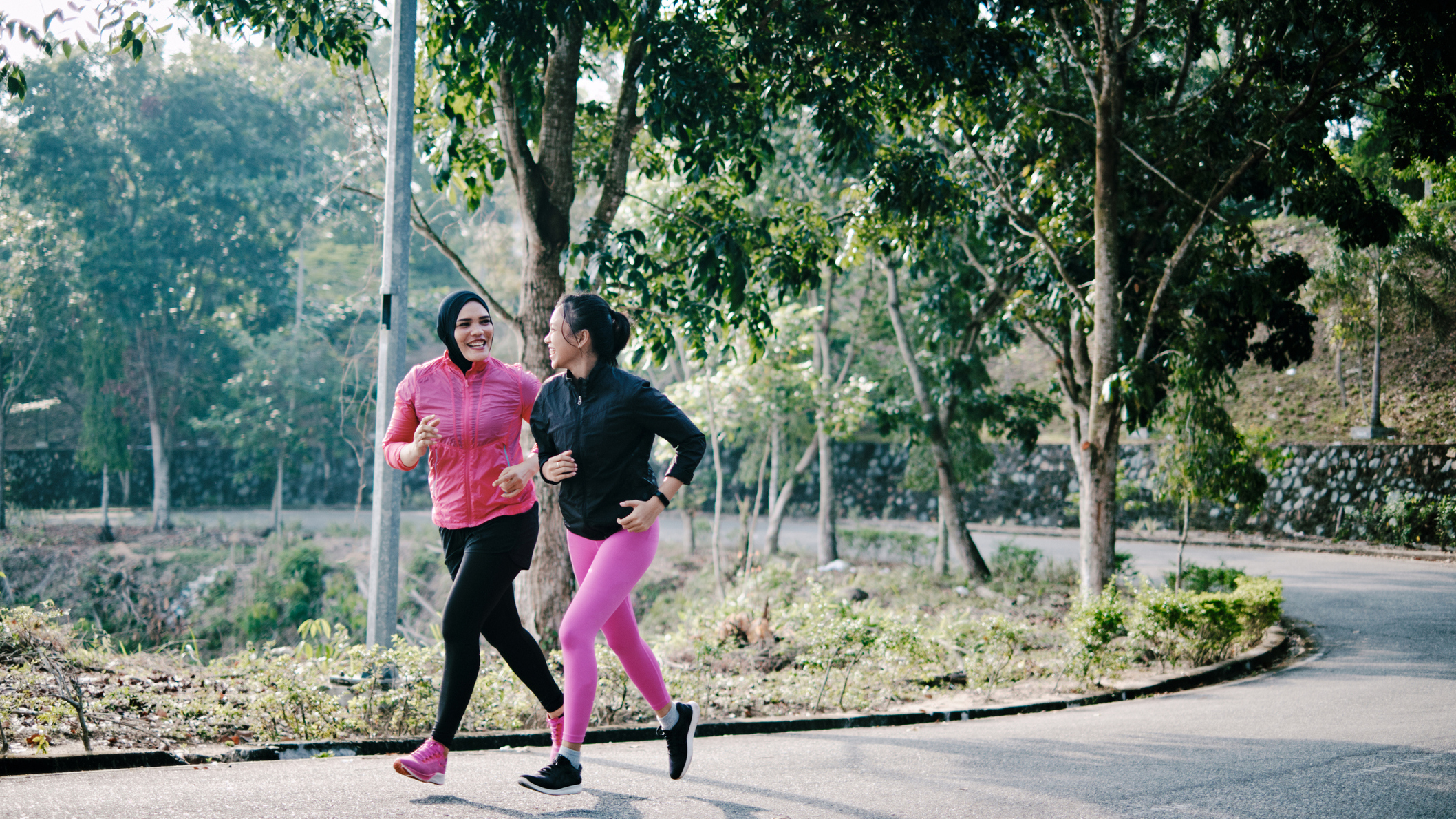How to improve your 5K time
This expert advice will help you to run a faster 5K


Nick Harris-Fry
Like most people, you probably started running with the help of a couch to 5K plan and the last thing you were thinking about was how to improve your 5K time, focusing instead on completing the distance without stopping. But we’d bet the farm once you achieved that goal you couldn’t help but wonder how much quicker you could do it.
It’s a great target to focus on, because the journey to running a faster 5K will help you get fitter in general, and the mental health benefits of training consistently with a goal in mind are also huge.
Many of the best running watches now offer training plans for 5K with suggested workouts to do each day, so they can be a useful tool to help you run a faster 5K, and some running shoes are designed specifically for speed.
However, it takes more than new running gear to beat your 5K PR. To find out how to improve your 5K time, we spoke to Ben Parker, head coach at run coaching app Runna.
How to improve your 5K time
1. Use A Training Plan
Having a well-designed training plan to follow not only ensures you do the right type of running to improve your 5K, but also that you don’t overdo it and push yourself too hard.
“Following a plan is a great way to optimize progress and minimize the risk of injury,” says Parker.
You can get a personalized training plan from a specialist running coach, or use a dedicated app such as Nike Run Club or Runna, which both have dedicated plans for improving your 5K that you can customize to the amount you’re able to run and your current ability.
Start your week with achievable workout ideas, health tips and wellbeing advice in your inbox.
“Our plans are tailored to ensure every user is getting the perfect balance at different intensities, the optimal mileage, all structured around the users availability,” says Parker.
Fit&Well’s sister website Coach also has 10-week 5K training plan which can be adapted to any level.
2. Run Intervals
Interval running—where you alternate between running at a high and low intensity—is an integral part of any training plan to run a faster 5K.
“During an interval session we will run above our usual, more comfortable pace, forcing our body to adapt, improving our running economy and making the body more efficient at running faster off less energy,” says Parker.
Interval sessions will push you hard, but once you get used to that feeling they become enjoyable, especially when you do them with other people.
You could try running five lots of 600m with a 60 second rest in between, using a running track or running watch to keep the distance consistent. In subsequent workouts, either increase the distance or number of reps, or decrease the rest time, to continue improving.

3. Track Your Runs
You can track your runs in any number of ways, but it’s smart to keep tabs on the distance you covered, how long it took you and your heart rate. This helps you to track your progress, which can help to keep you motivated.
Using a fitness tracker or running watch is the best way to do this because you will be able to see your stats on your wrist while running. You can also use phone apps to track your runs, and keep a training log that you can share with friends through an app like Strava.
4. Run With A Friend Or Club
“Endless miles going solo can get tough and become mentally exhausting,” says Parker, who recommends meeting up with a friend or joining a local running club.
“If you have a friend who runs faster than you they might be able to help push you outside of your comfort zone. Or if you are faster than your friends, they may well be able to keep you from getting too excited on your easy runs.”
Even if you can’t do every run with a friend or club, trying to do your interval sessions with others is particularly worthwhile because pushing yourself to run faster than is comfortable feels easier and is much more enjoyable with company.

5. Warm Up And Cool Down
When running regularly and doing harder interval sessions each week, it’s important to look after your body by warming up and cooling down.
“A quality warm-up and cool-down before every workout is important,” says Parker. “This will help to minimize injury as well as aid recovery. Your 5K time isn’t going to get quicker if an injury creeps in.”
The aim of the warm-up is to prepare your muscles for the workout ahead and raise your heart rate. Do 5-10 minutes of gentle jogging interspersed with dynamic stretches (those done while moving), especially ones that target your legs, such as lunges, hip gate openers, walking toe touches and side lunges.
Conversely, the focus of the cool-down should be to slowly lower the heart rate and stretch the muscles to expel lactic acid, which can contribute to post-workout muscle soreness. Run at a slow pace, reducing to a jog and then a walk over the course of five minutes. Follow this with some static stretches (those done while stationary), such as standing hamstring, calf and quad stretches.
6. Do Some Cross-Training
Running is obviously your priority when looking to run a faster 5K, but you can have too much of a good thing.
“More and more running doesn’t always help, and can lead to overtraining,” says Parker.
Our cross-training for runners guide contains more on this subject, but a good place to start is on cardio machines, such as sessions on the elliptical machine or exercise bike. This helps you to keep improving your cardiovascular fitness with less impact on your body than running.
Strength training is also important for runners, because it helps the body to handle the impact of the sport. Doing workouts that focus on your quads, hamstrings, calves and glutes will build strength, making you a more resilient and faster runner.
7. Invest In Your Equipment
You don’t have to spend huge amounts of money to get kitted out for running, but it is worth investing in some dedicated kit to make your experience more enjoyable.
“Running is a great sport and we don’t need a lot to get out the door and move,” says Parker. “Try to avoid letting your running shoes get too worn out or the risk of some injuries will increase, and make sure you have clothes that fit and don’t rub. Dress for the weather you are running in and make sure you are comfortable.”
The best running shoes for you will depend on a variety of factors such as your gait and the surface you’re going to run on—road or trail. It’s worth trying a few different pairs of shoes on if possible. Our guides to the best running trainers for women and the best running trainers for men contain more information on how to pick your shoes, plus recommendations.
8. Enjoy Yourself
If you enjoy your running, you are more likely to stick at it and keep improving. Your running routine has to work for you, so be flexible in how you set it up or it will feel like a burden rather than something you enjoy.
“Make changes to your routine that you enjoy making and commit to running a number of days that can realistically slot around your schedule without missing all of your favorite social commitments,” says Parker.
Also remember that every runner is different, so there’s no value in comparing yourself to others. The goal is to improve your 5K time, not match anyone else.
“Don't compare yourself to others as your only competition is you!” says Parker. “If you do this, you’ll get to the 5K PB with a smile on your face, ready to beat it once more.”
Lucy is a freelance journalist specializing in health, fitness and lifestyle. She was previously the Health and Fitness Editor across various women's magazines, including Woman&Home, Woman and Woman’s Own as well as Editor of Feel Good You. She has also previously written for titles including Now, Look, Cosmopolitan, GQ, Red and The Sun.
She lives and breathes all things fitness; working out every morning with a mix of running, weights, boxing and long walks. Lucy is a Level 3 personal trainer and teaches classes at various London studios. Plus, she's pre- and post-natal trained and helps new mums get back into fitness after the birth of their baby. Lucy claims that good sleep, plenty of food and a healthy gut (seriously, it's an obsession) are the key to maintaining energy and exercising efficiently. Saying this, she's partial to many classes of champagne and tequila on the rocks whilst out with her friends.
- Nick Harris-FrySenior writer
